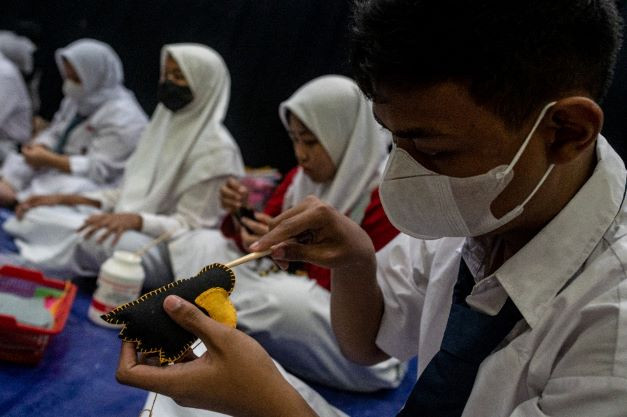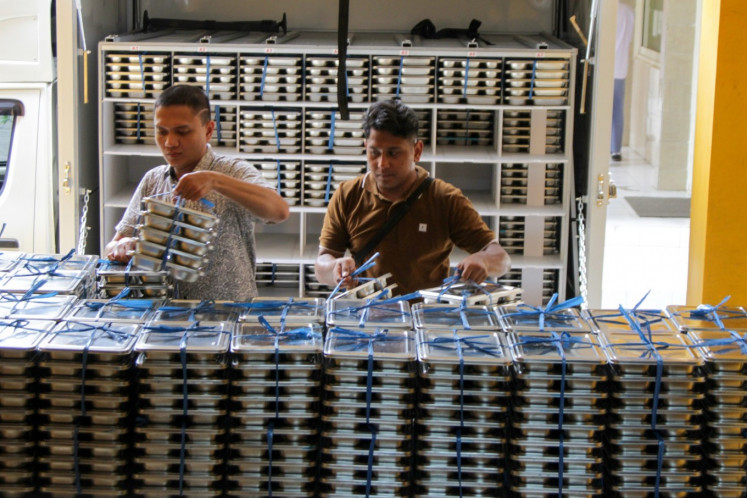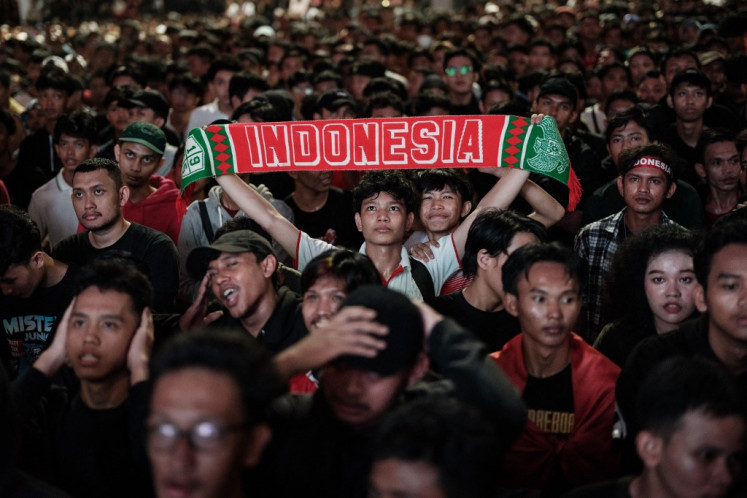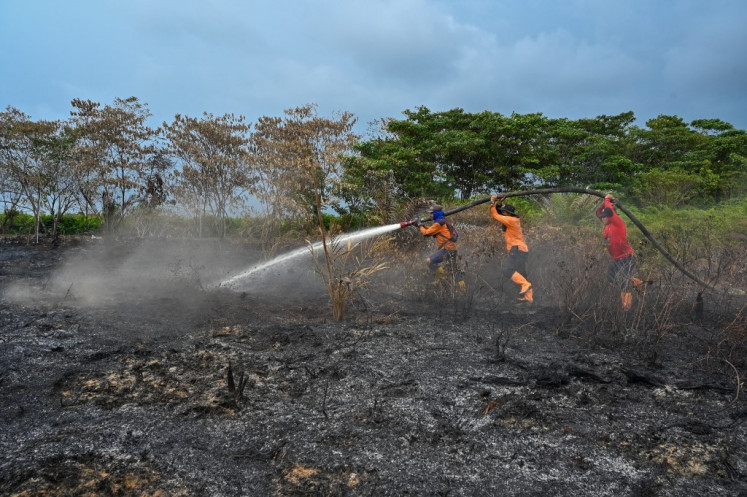ASEAN in dire need of education collaboration: Experts
Vast gaps in learning quality and human development will bring the ASEAN region to the middle-income trap.
Change text size
Gift Premium Articles
to Anyone

A
mong the dire repercussions of the COVID-19 pandemic in Southeast Asia is the deepening of a long-existing problem for the region: the deficiencies and disparity of its education systems.
Some countries, mostly high-earning ones, dealt with the sudden shift to online learning with much swiftness. Meanwhile, its developing neighbors limped their way through the shocking transition – a shortcoming that will cost ASEAN billions of dollars over the next decade through a decline in both skilled and unskilled labor.
A May estimate from the Asian Development Bank (ADB) brought some gloomy forecasts for the region: a gross domestic product (GDP) decline of 1.37 to 3.27 percent for the Philippines, Cambodia and Vietnam in the next ten years due to school closures.
Malaysia absorbed the highest impact with a projected economic decline of 4.24 percent by 2030, while Indonesia was predicted to lose roughly US$45 billion in the same course of time.
The only state spared from this fate was Singapore, whose GDP will only increase, as the learning losses were low enough to be compensated.
In seeing the striking data, experts urged that ASEAN pay closer attention to regional education cooperation over the next several years through mindful internationalization efforts. In doing so, the gaps in education quality would collectively improve, boosting the region’s labor pool as well as competitiveness in the global economy.
“The exchange of perspectives is not happening [within ASEAN]. What happens in Indonesia matters for Malaysia – schools in the Philippines would affect Thailand. There is a need for regional cooperation,” said Niaz Asadullah, the Southeast Asia lead of the Global Labor Organization to The Jakarta Post.
“The strength of ASEAN is the region’s demography of a shared and youthful labor force. That strength should not become a liability,” he said.
Diverse and coordinated
Many factors influence a country’s education quality, said Niaz, emphasizing that schooling does not necessarily translate into learning. One of the most contributing factors to an effective education system is how money was spent by the government, he added.
“One country in ASEAN is unusually strong – Singapore. They are the world leaders in education. But we are only talking about 400 schools across the country; not even comparable to Jakarta,” he said.
Since ASEAN countries vary greatly in their economic capacity, Niaz suggested that a coordinated investment should be done in response to the recent crisis aimed to create more high-skilled jobs across the region. This collective investment, he said, would expedite the speed of the region’s economic growth.
Vishalache Balakrishnan, a Malaysian education researcher with experience teaching across Southeast Asian universities, added that ideal regional cooperation would not seek to bend school syllabi or systems into uniformity; instead, it will promote internationalization where countries use their distinctive kearifan lokal (local wisdom) to learn from each other.
“There is no one-size-fits-all approach to education. We cannot generalize that city and rural students are the same or ignore the cultural differences across countries,” she told the Post.
That being said, internationalization efforts across ASEAN can be greatly improved, the experts concurred. For example, since ASEAN primarily focuses on tertiary-level exchanges, this experience can be further boosted by encouraging exchange students to share their learnings with the primary and secondary students in their hometowns, Visha suggested.
An outward-looking region
Other than ensuring better coordination between countries, internationalization would also ensure that Southeast Asian students can gain a more globalized perspective in their learning, the experts added. This, Niaz said, was a key factor in an effective education system.
“A few decades ago, as Malaysia was moving to the upper-middle income class, it shifted the focus away from industry to education as the primary driver of the economy. It opened the gates for research for both public and private universities,” Niaz said.
“Meanwhile, the opposite was happening in Indonesia. There was a shift to internalization. While Malaysia was outward-looking, Indonesia became inward-looking.”
The past decade has seen Malaysia quickly transform into a hotspot for intra-regional students seeking an education destination, home to 50 percent of all foreign ASEAN students. In 2022, 170,000 international students flocked to Malaysia, while Indonesia is host to only 6000 foreign learners.
Thai social science researcher Sasiwimon Paweenawat agreed with the idea of internationalization, suggesting the bolder addition of an open cross-border higher learning, whereby governments encourage and facilitate their youths to study in other ASEAN countries.
“If students can learn in neighboring countries, it will compel the universities to have somewhat similar standards. [With the current system], the standards are so different, which means human development is varied as well,” she explained to the Post.
“How can you be a united region, when human development is so vastly different?”
Rekindling cooperation
“In the 60s and 70s, there were a lot of education initiatives between ASEAN countries. Indonesia, Thailand and Malaysia – they came together,” said Visha.
“Now, less attention has been paid to education. There are conferences, but conferences do not result in many follow-ups.”
In July, ASEAN launched the Roadmap on the ASEAN Higher Education Space 2025, a blueprint for improving the region’s education system to enable the “harmonization and internationalization” of the region’s universities through digital transformation.
While the details and outcomes of the roadmap have yet to be seen, experts have previously suggested that intra-ASEAN student mobility is a challenge for the region.
Globally, internalization efforts tend to focus on formal agreements and not productive collaborations, research from the University of Toronto revealed, and Southeast Asian young adults for the most part do not see the region as an attractive education destination.
But some countries, like Indonesia, seem to be comfortable with the fact. Speaking as a panel at an ASEAN Youth Fellowship in early November, Education, Culture, Research and Technology Minister Nadiem Makarim admitted that making Indonesia an educational hub is not on his priority list.
“Fifty percent of our students are below the minimum literacy level. Seventy percent are below the numeracy level. I’m not trying to make Indonesia the best place to study, I just want to make sure that schools are a place where students can learn,” he said.
Upon being asked what his plans were for next year’s education cooperation as Indonesia assumes ASEAN chairmanship, Nadiem replied, “I do not know. We are not there yet. No plans.”
Experts consider that comment to be far from satisfactory given the current situation.
“There needs to be a model to facilitate regional collaboration. It struck me that there are many popular talks about cooperation in all kinds of [ASEAN] meetings, but there is no deep thinking because everyone is so busy with the local issues,” Niaz urged.
“They only consider ASEAN as diplomatic etiquette.”









